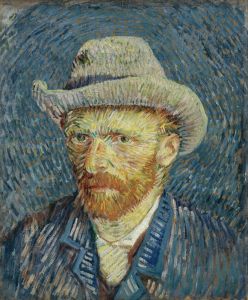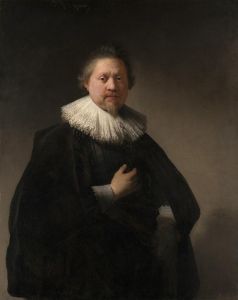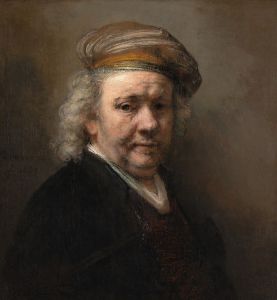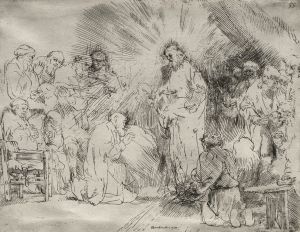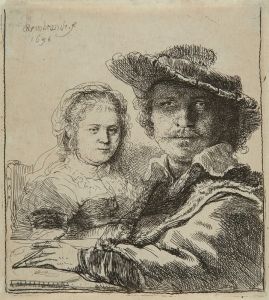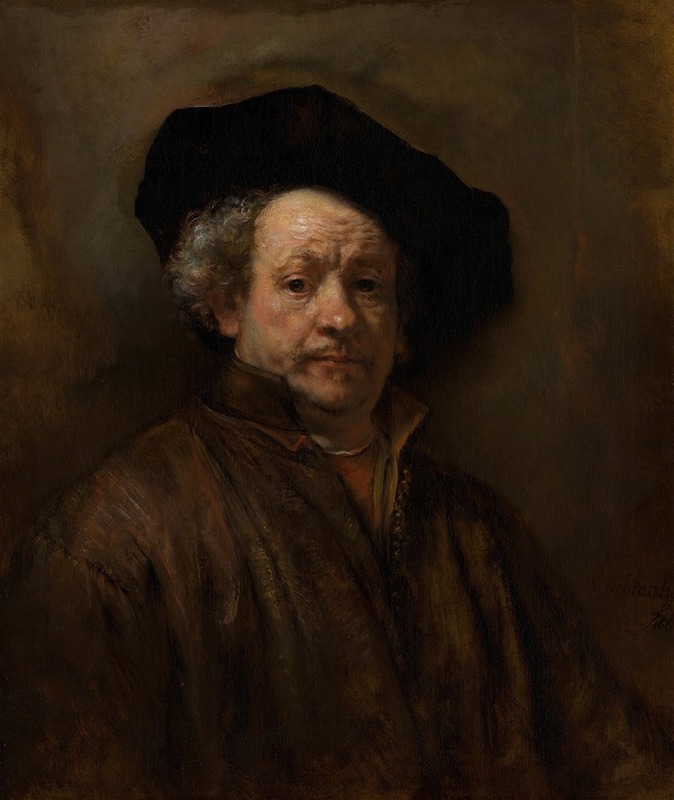
Self-Portrait
A hand-painted replica of Rembrandt van Rijn’s masterpiece Self-Portrait, meticulously crafted by professional artists to capture the true essence of the original. Each piece is created with museum-quality canvas and rare mineral pigments, carefully painted by experienced artists with delicate brushstrokes and rich, layered colors to perfectly recreate the texture of the original artwork. Unlike machine-printed reproductions, this hand-painted version brings the painting to life, infused with the artist’s emotions and skill in every stroke. Whether for personal collection or home decoration, it instantly elevates the artistic atmosphere of any space.
Rembrandt van Rijn, one of the most celebrated Dutch painters of the 17th century, is renowned for his extensive series of self-portraits, which provide a profound insight into his life and artistic development. Among these, "Self-Portrait" is a notable example, showcasing his mastery in capturing human emotion and the subtleties of light and shadow.
Rembrandt's self-portraits are remarkable not only for their technical skill but also for their introspective quality. Throughout his career, he painted, drew, and etched nearly 80 self-portraits, which is about 10% of his total artistic output. These works span his entire career, from his early days in Leiden to his later years in Amsterdam, offering a visual autobiography that chronicles his evolution as an artist and his personal experiences.
The "Self-Portrait" by Rembrandt, like many of his other self-portraits, is characterized by its dramatic use of chiaroscuro, a technique that employs stark contrasts between light and dark to create a sense of volume and depth. This technique not only highlights the physical features of the subject but also imbues the portrait with a sense of drama and intensity. Rembrandt's adept use of light and shadow allows him to convey a wide range of emotions and psychological depth, making his self-portraits deeply engaging and introspective.
In this particular self-portrait, Rembrandt presents himself with a direct gaze, engaging the viewer with a sense of immediacy and presence. His expression is contemplative, suggesting a moment of introspection. The texture of his skin, the play of light across his face, and the rich, warm tones of his clothing are rendered with meticulous detail, showcasing his exceptional skill in capturing the nuances of human expression and the materiality of his subjects.
Rembrandt's self-portraits are not merely exercises in self-representation; they also reflect the broader cultural and social context of the Dutch Golden Age. During this period, there was a growing interest in individualism and self-exploration, themes that are evident in Rembrandt's work. His self-portraits can be seen as a reflection of this cultural shift, as they explore themes of identity, aging, and the passage of time.
Moreover, Rembrandt's self-portraits are significant for their innovative approach to portraiture. Unlike many of his contemporaries, who often idealized their subjects, Rembrandt was unflinchingly honest in his depictions of himself. He did not shy away from portraying the signs of aging or the emotional complexities of his life, which adds a layer of authenticity and vulnerability to his work.
The "Self-Portrait" by Rembrandt is housed in various collections around the world, with notable examples in institutions such as the Rijksmuseum in Amsterdam and the National Gallery in London. Each self-portrait offers a unique glimpse into Rembrandt's life and artistic journey, making them invaluable to both art historians and enthusiasts.
In conclusion, Rembrandt's "Self-Portrait" is a testament to his unparalleled skill as a portraitist and his deep understanding of human nature. Through his innovative use of light and shadow, his honest and introspective approach to self-representation, and his ability to convey complex emotions, Rembrandt has left an indelible mark on the history of art. His self-portraits continue to captivate audiences, offering timeless insights into the artist's life and the era in which he lived.






